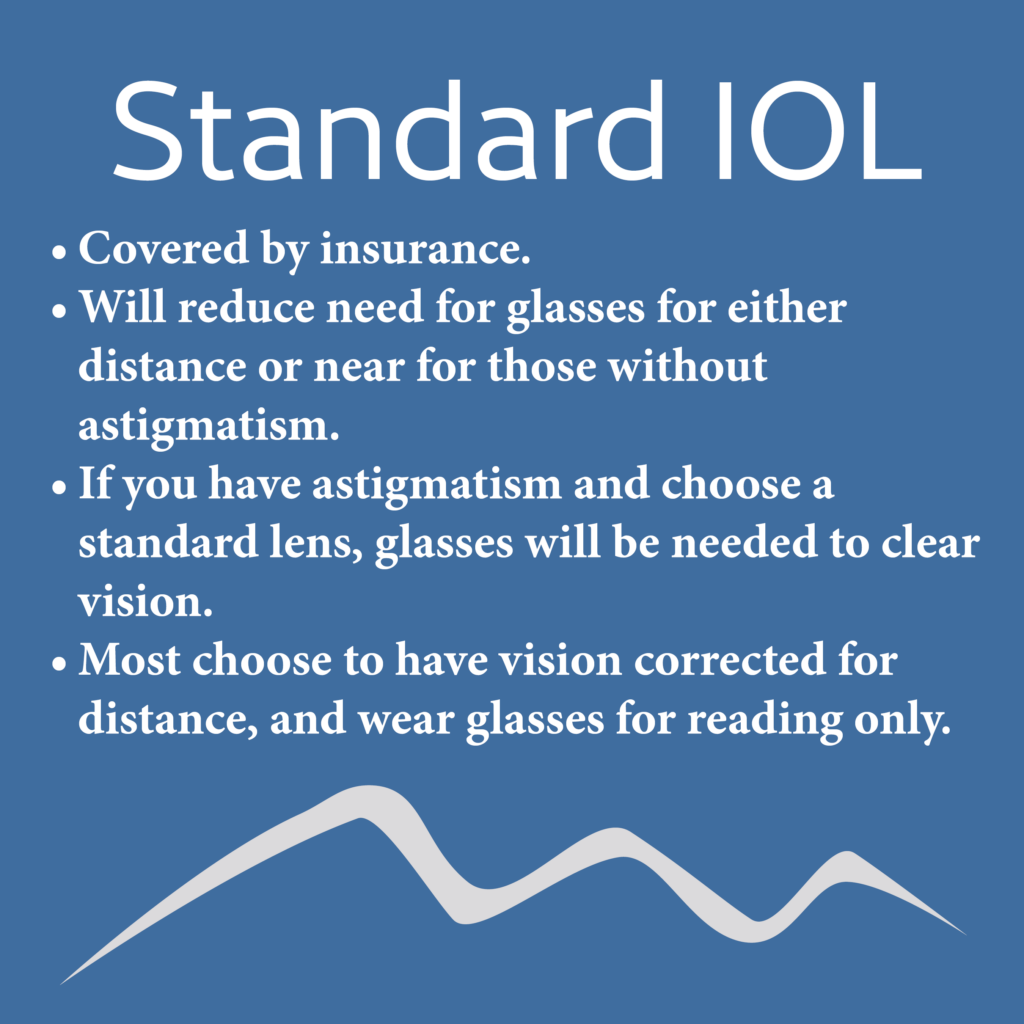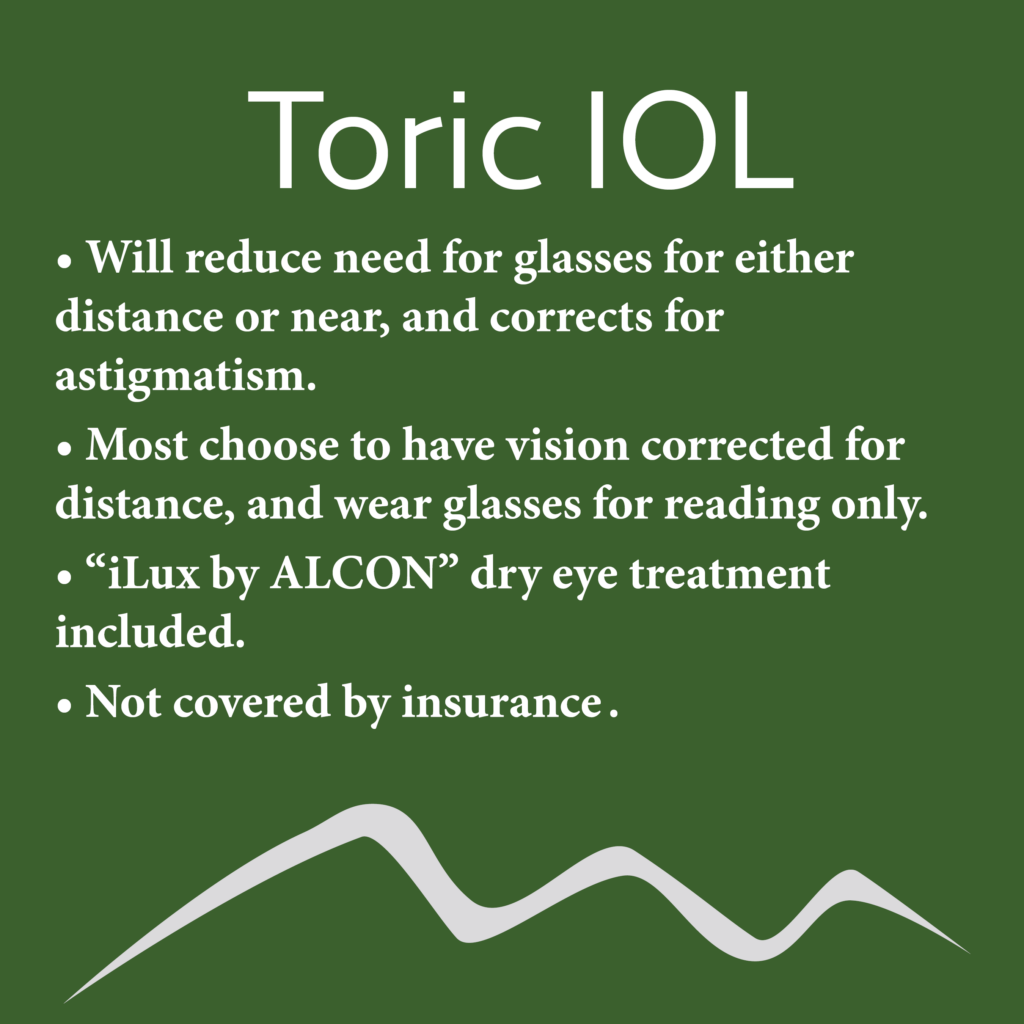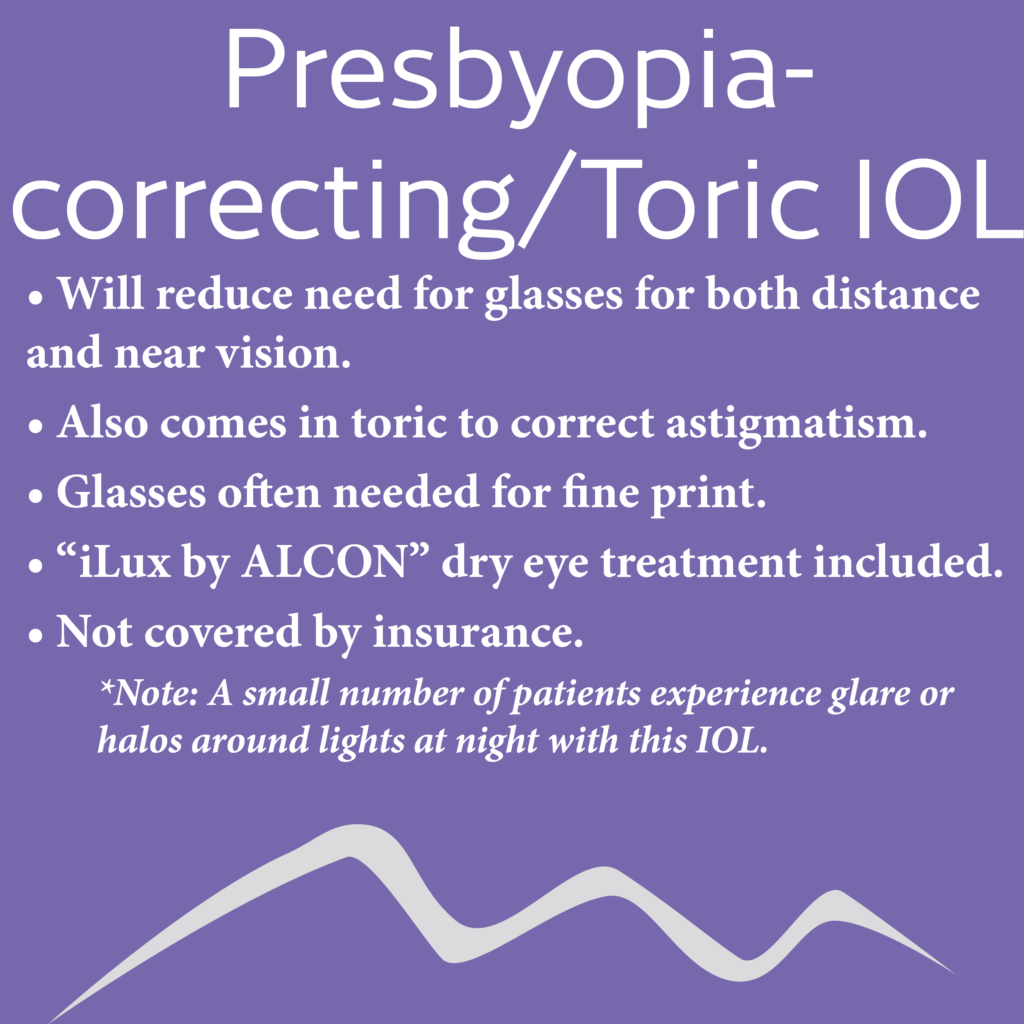Regain Clear Vision With Cataract Surgery
What are cataracts?


We are all born with a lens inside our eye that focuses light onto our retina. The lens is positioned behind the iris (the colored part of the eye). When your natural lens becomes cloudy and opaque, it is known as a cataract.
Most cataracts worsen very slowly over several years until they start affecting your vision. The most common cause for cataracts is older age, but certain things such as excessive UV damage, diabetes, head trauma, smoking, genetics, prior eye surgery, and prolonged corticosteroid use can cause cataracts to form earlier in life.
There has been no proven way to prevent cataract formation, but using sunglasses when it is sunny outside and living a healthy lifestyle may slow cataract development.
How do cataracts affect my vision?
Cataracts can affect vision differently from person to person, but here are some common symptoms you may experience as they degrade your vision over time:
- Increased glare at nighttime, especially while night driving due to oncoming traffic headlights.
- Needing more and more light for your everyday activities.
- Loss of ability to see fine detail or small print even with the right glasses prescription.
- Blurred or fogged vision–like a film is over the eyes all the time–many people feel like their glasses are dirty all the time.
- Colors are dull and less vibrant.
- Double vision (ghost images) in one or both eyes that persist when closing one eye.

Patients who have astigmatism have an irregularly shaped cornea (more like a football, rather than a basketball). These patients may choose a specialized toric intra ocular lens (IOL), which is specifically adapted to aid their condition.
Most people have significantly improved vision after cataract surgery. However, cataract surgery does not fix poor vision that is due to problems with glaucoma, cornea disease, or retinal disease.
What is cataract surgery like?
Why should I get cataract surgery at Cascadia Eye?

There are very few things in life more important than vision, and making the decision to have cataract surgery can be stressful. At Cascadia Eye our friendly and skilled surgical staff consistently make our patient experience comfortable and easy. Not only is our ambulatory surgery center, Cascadia Surgical, the only local AAAHC rated eye facility in the region, we enjoy over 95 percent patient satisfaction rates and a 0 percent infection rate.
Our highly-trained cataract surgeons are experts and utilize the most current surgery techniques and well-proven technology for the best results for our patients. For example, we include an ALCON iLUX treatment with our premium IOL surgeries. iLux is a quick, in-office treatment which treats dry eye caused by Meibomian Gland Dysfunction (MGD) and has been shown to improve cataract surgery outcomes.
All our surgeons live and work in the community, and are an integral part of your neighborhood. And, since they live nearby, patients can be assured that they will be available quickly–urgent care will not need to wait until they can arrange for travel for a consultation. Although our knowledgeable optometrists perform much of our patients’ post-operative care, patients can be assured that a surgeon will be available in cases that require more complicated follow-up.
We care deeply about our patients and would be honored if you choose us to help improve your vision.
What to know prior to cataract surgery:
The first step to performing cataract surgery is actually to measure your eye to see which power lens implant is the best fit. You will have an appointment prior to surgery for these measurements and to discuss your health with one of our surgical counselors.
Prior to cataract surgery, if you regularly wear contact lenses, it is important for you to discontinue use for at least three weeks. This will allow your cornea to return to its natural shape so that the doctor will be able to conduct a comprehensive pre-op examination and determine an accurate measurement for the power needed for your new lens implant.
In most patients, the lens implant power is calculated very accurately during the initial examination. However, in some rare cases, particularly in patients who are highly nearsighted, highly farsighted, or have had LASIK or other refractive surgeries prior to cataract surgery, a slight shift of the new lens implant can potentially cause a change in vision that may cause the patient to need glasses for their best corrected vision. Lens implants may be exchanged, but fortunately this is very rarely necessary.
We provide conscious sedation during cataract surgery, which means you will be awake but very comfortable during surgery. You will not be able to operate heavy machinery or drive on the day of surgery so you will need to have a driver bring you to our surgery center and take you home after the surgery.
What to expect during your surgery:
The cataract surgery procedure is virtually painless, and as an outpatient procedure, it typically takes less than 30 minutes to complete. However, you will be in the surgery center for 1 1/2 to 2 hours to allow time for pre-op preparation, the surgery, and recovery after sedation.
During the surgery, anesthetic eye drops and intravenous sedatives will be administered by an anesthesiologist or a nurse anesthetist (CRNA). Once it takes effect, your cataract surgeon will make a very small incision in the eye and utilize sound waves to break up the cataract. The resulting pieces are removed through the tiny incision. Once your impaired lens is removed, the surgeon will insert the new lens into your eye. Usually no stitches are needed and the incision will close naturally.
After surgery:
A physician will examine your eye one day and one week after surgery to ensure the eye is healing well. If you are having surgery on both eyes, the procedures will be scheduled about two weeks apart to make sure the first eye is healing well. During the first week for each eye, you will have some activity restrictions and will need to wear a shield over your eye when you sleep. Most people’s vision stabilizes about one month after surgery. Once your second eye has stabilized, you will be provided an updated glasses prescription if you still require glasses.
Cascadia Eye offers a exceptionally valuable benefit for post-cataract surgery patients who have Medicare and need an updated glasses prescription or would like some fun fashion sunglasses.
Intra Ocular Lens (IOL) choices:
For patients undergoing cataract surgery, understanding the changes that are part of the natural aging process is important when reviewing surgical options. An age-related condition called presbyopia affects the eye’s ability to shift between distance to near vision. Presbyopia is the reason that many people require bifocals or a separate pair of reading glasses as they get older. People with cataracts either already have this condition or will likely develop it eventually.
Because Presbyopia affects your lifestyle and glasses options, choosing the appropriate IOL prior to cataract surgery is very important. One of our cataract surgeons will discuss the many IOL options with you during your exam and recommend the lens that best fits your needs and lifestyle.
Here are the three options you will likely be presented with:



*read more about IOL choices in our “Choosing a Lens for My Eye Surgery” blog post.
Contact Cascadia Eye
If you would like to learn more, or if you would like to schedule an appointment or consultation with our talented doctors at Cascadia Eye, please contact us today or use our online scheduler. You may also pre-shop for glasses at our online pre-shopping page any time. Our entire team is committed to protecting and improving your vision and the health of your eyes. We are happy to answer any questions you might have!
In addition, join us on Facebook, Instagram or YouTube to ask your questions about eyes, exams, and our practice. We’d love to hear from you – and there might be a blog to address your questions in the future.


